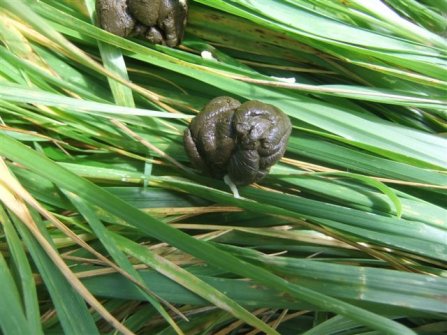While sheep tapeworms are large and the segments passed in the dung are very obvious, there is no consistent evidence that they cause production loss or ill-health. Therefore, treatment for tapeworms is not warranted.
The most common tapeworm of sheep and goats in Australia is Moniezia expansa. These worms consist of a flat ribbon-like tube of segments called proglottids and a neck and head (the size of a pin head) at one end of the worm.
Adult tapeworms, which can be up to a metre long, are found in the small intestine of sheep and goats where they attach to the inner surface using strong, muscular suckers on the head of the tape (the scolex). Each proglottid (segment) is a complete functional unit, including sets of male and female reproductive organs, and thus can fertilise itself or other nearby segments as necessary.
Mature segments, full of tapeworm eggs, break free from the end of the body of the tapeworm and pass out of the host's gut via the dung. They are said to look like grains of cooked rice in the dung although very fresh segments are flat and ribbon-like. Eggs are released from the segments into the environment and can remain potentially infective for several months.

Tapeworms have what is known as an indirect life cycle, with more than one host in the life cycle. To become infective to sheep or goats, the eggs need to first be eaten by a grass mite that lives in the soil or on pasture (oribatid mite).
These mites are more active during the summer months. To complete the life cycle, mites containing tapeworm eggs are eaten by the final host (sheep or goat). The mites are digested in the host’s gut, the eggs are released and develop into adult tapeworms in the small intestine of the host.
Intestinal tapeworms (Moniezia) are blamed for a range of health problems, but there is no hard evidence for any effects on production or health. Treating specifically for intestinal tapeworm is unlikely to be beneficial, whether in terms of scouring or weight gains. It is more important to effectively treat the less visible worms (the important roundworms such as barber’s pole and scour worms), both of which cause severe production losses and death.
If you feel you must remove tapeworms, use a drench containing praziquantel. Albendazole aids in the removal of tapeworm segments, but will not kill the head of the worm. Be aware, however, that resistance of the important sheep and goat worms to albendazole (not to mention many other drench actives) is very common.